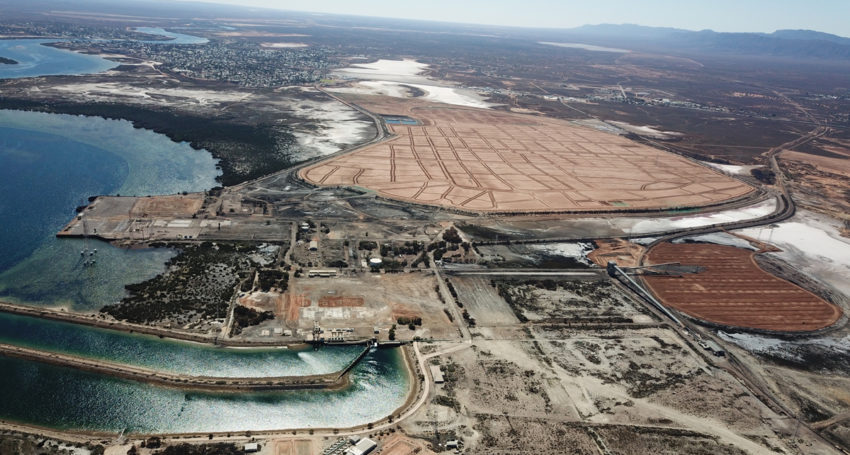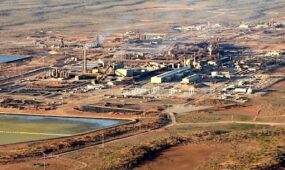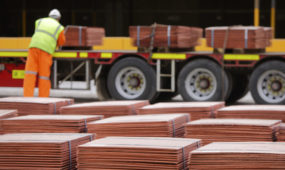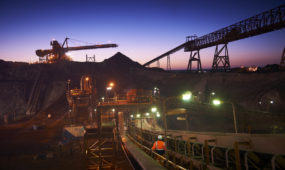Power station turned iron ore port signs first customer
Mining & Resources
The long-awaited transformation of the former Port Augusta power station site in South Australia has taken an important step forward with the first customer signing on to use the iron ore export port set to be established there.

Sign up to receive notifications about new stories in this category.
Thank you for subscribing to story notifications.

New site operator Port Augusta Operations has signed a memorandum of understanding with mineral explorer Havilah Resources to use the Spencer Gulf port for iron ore exports.
Port Augusta Operations is an independently operating arm of Cu-River Mining, the iron ore magnetite company that last year unveiled a $250 million plan for a global port facility at the site capable of handling up to 15 million tonnes a year of iron ore, grain and other commodities.
Recently renamed Port Playford, plans for the site included first upgrading its existing port terminal facilities, 5km rail loop, unloading facility and storage sheds. The 1068ha site is 5km south of Port Augusta and 300km north of Adelaide.
“We hope the MOU will help advance our plans to transform the site and target a start date for operations from January 2022,” a spokesman from site operator Port Augusta Operations said.
“This could potentially see Port Playford become the strategic hub for multiple companies to use in transporting and exporting products from the region.”
Port Augusta Operations has a 99-year lease on the Port Playford site and is working on developing the land and terminal into a modern iron ore export terminal including refurbishment, upgrading and other transhipment arrangements.
The establishment of an iron ore port would help reclaim the upper Spencer Gulf region’s 20th Century title of the “Iron Triangle” following the resurgence of the Whyalla steelworks and the ongoing lead smelter in Port Pirie.
Flinders Power has been managing the rehabilitation of the former power station site since its closure in 2016, and reached an agreement in February 2019 to sell the coastal land to CU-River Mining.
Havilah technical director Chris Giles said signing the MOU made sense because the explorer’s Braemar, Maldorky and Grants iron ore deposits were close to a rail line, which linked Broken Hill with Port Augusta.
“Port Augusta Operations’ proposed port and transhipment facility is approximately 300km by existing rail link from Havilah’s Braemar iron ore deposits, so it potentially provides a favourable logistical solution for us,” Giles said.
“Our Maldorky and Grants iron ore deposits in turn are located in close proximity to the transcontinental rail line, meaning reduced capital expenditure on logistics.
“Given the almost zero overburden, soft nature of the iron ore and its amenability to upgrade to a high yield, high quality 65 per cent iron product, we think the availability of this new port facility will potentially help to make our iron ore deposits internationally competitive.”

The former power station being demolished in 2018. Picture courtesy of Flinders Power.
Havilah’s Maldorky iron ore discovery, which is within the Braemar formation, has an indicated mineral resource of about 147 million tonnes at 30.1 per cent iron.
CU-River also owns the Cairn Hill mine and several highly prospective mining projects south of Coober Pedy.
The Cairn Hill mine, located on the Woomera Prohibited Area (WPA), has exported more than one million tonnes of ore to the Chinese steel industry since 2014.
The company has previously said it planned to expand the Cairn Hill mine and establish two further significant mines by 2026.
When CU-River Mining announced it had bought the former power station site from Flinders Power in February last year it also flagged the potential for an eventual expansion of the port to handle more than 50 million tonnes of commodities per year.
It was expected more than 150 people would be employed during the construction phase and up to 100 people for full time operational positions once construction was complete.
The 90MW Playford A power station was commissioned by the Electricity Trust of South Australia in 1954 and the adjacent 240MW Playford B plant was constructed in 1963.
The 520MW Northern power station was established alongside Playford B in 1985.
All three were fuelled by coal mined at Leigh Creek in and transported 260km along a dedicated rail line south to Port Augusta.
Alinta Energy mothballed Playford B in 2012 and the last electricity was produced at the Northern Power Station in May 2016.
The power stations’ ash dam reached a size of 273 ha and a depth of 5 – 8m by the time the plants closed in 2016.
As part of the closure process, South Australia’s Environment Protection Authority required Flinders Power to develop and implement a closure and post-closure plan, a dust management plan, a rehabilitation plan for the ash dam and put in place additional dust control measures when needed.
Flinders Power managed the rehabilitation of the Port Augusta site after its closure and reached an agreement in February to sell the coastal land to CU-River Mining.
The power station was previously fuelled by coal mined at Leigh Creek in Outback South Australia and transported 260km along a dedicated rail line south to Port Augusta.
Jump to next article



